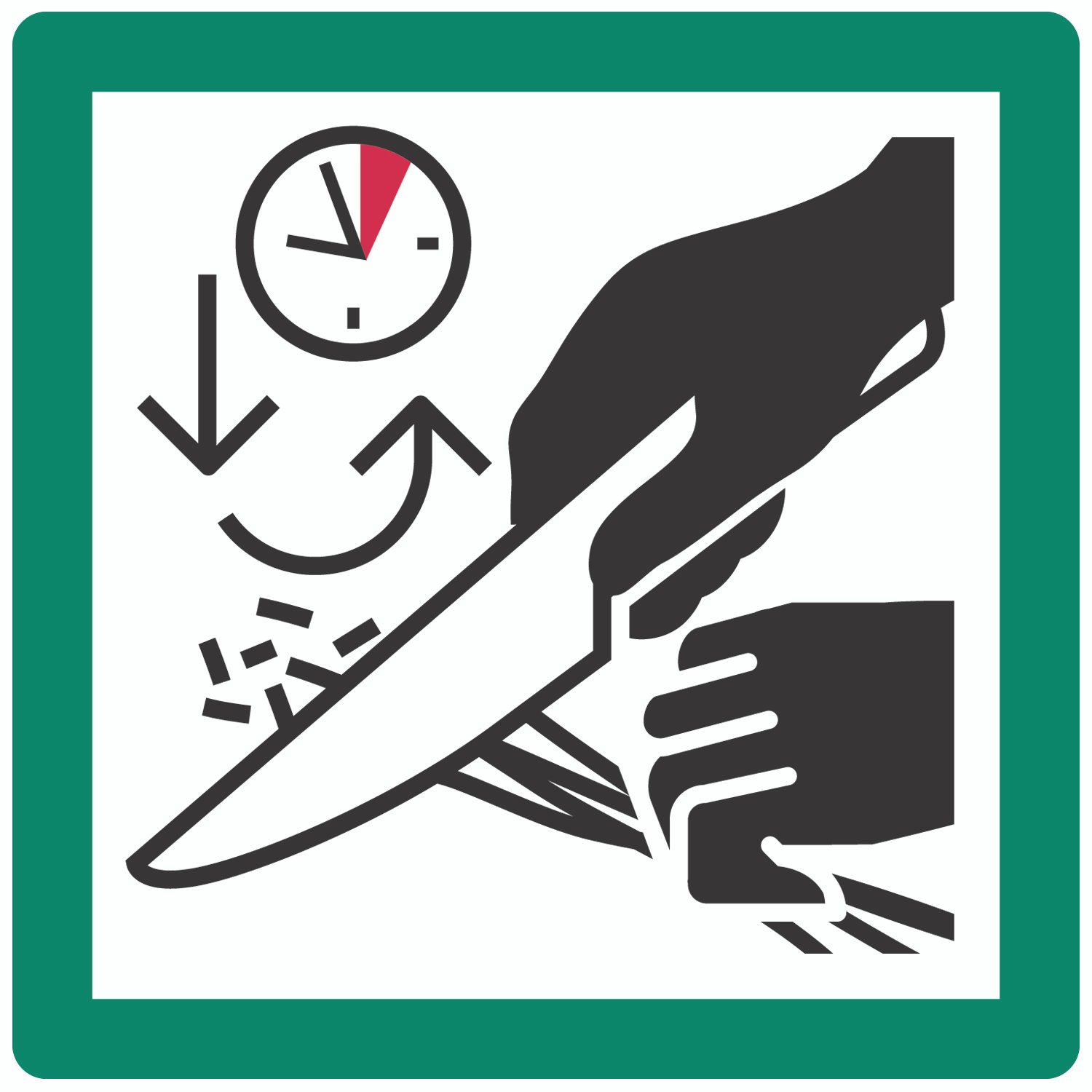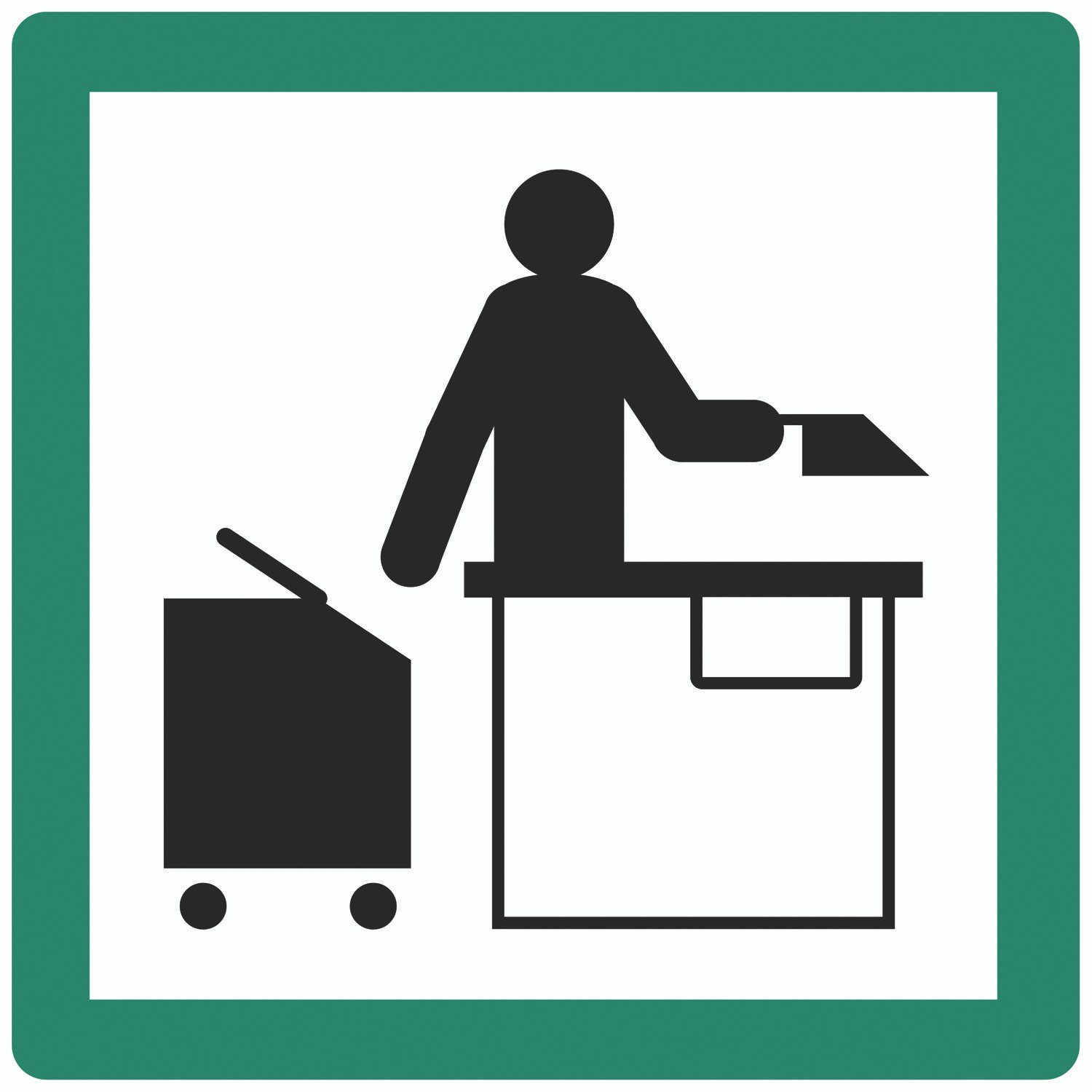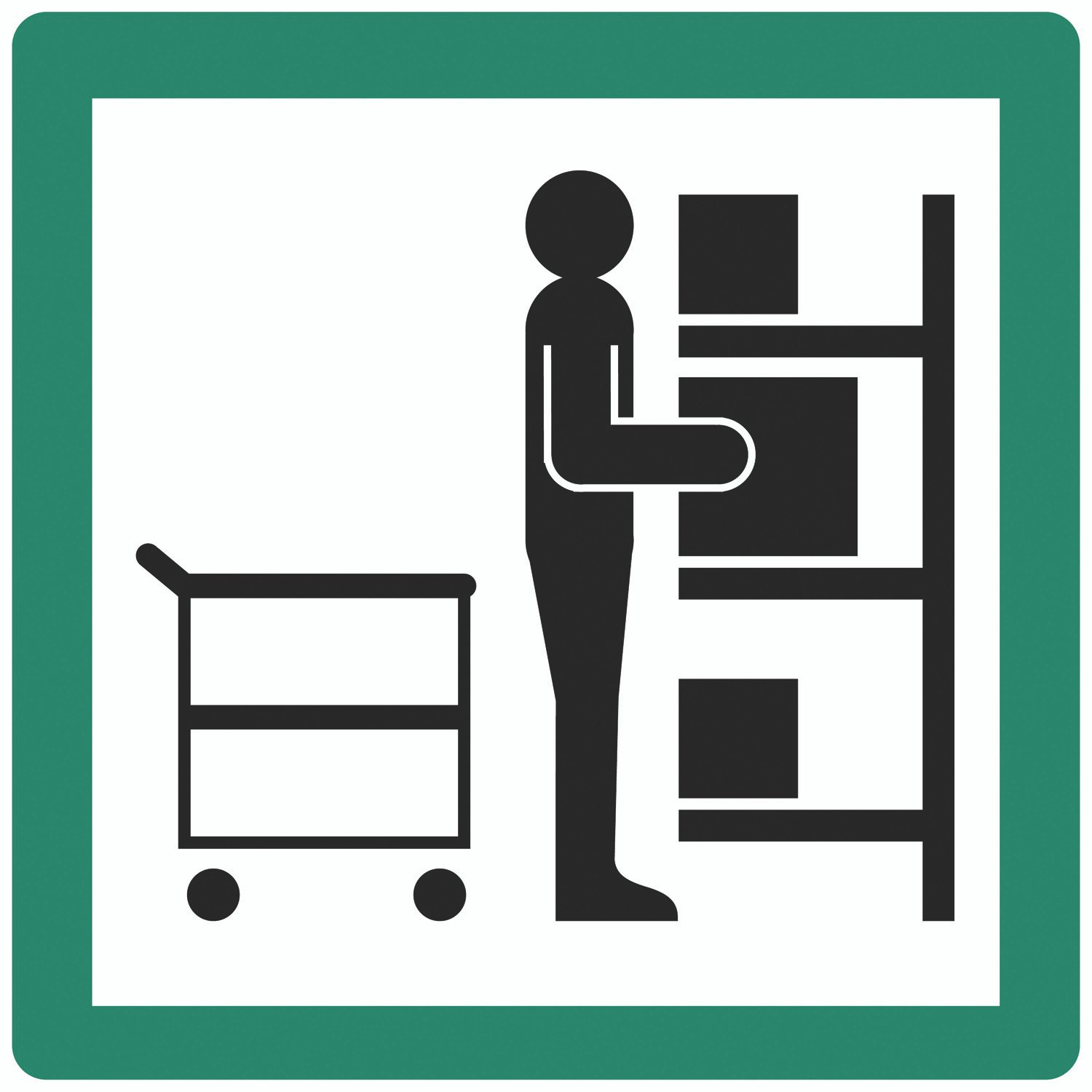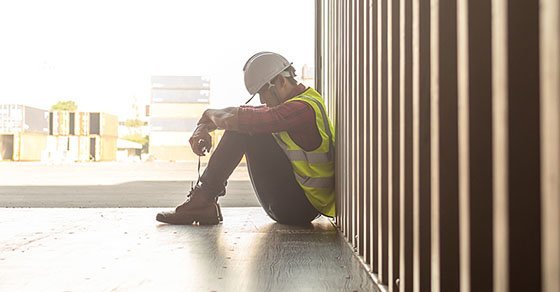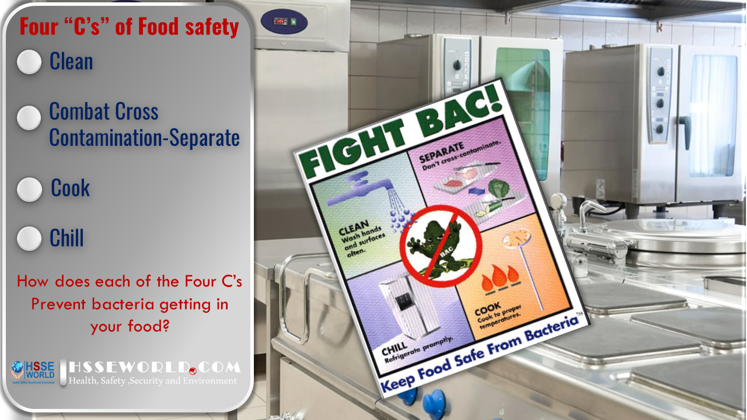Your body is made up of muscles, bones, tendons, joints, and other tissues. This is called the musculoskeletal system. When you injure a part of this system it is called a Musculoskeletal Disorder, or MSD. at the end of this article, you will be able to learn the following :
- How to spot some MSD hazards in the kitchen
- Explain how to avoid getting hurt.
- Talk about where you can get help at work.
- Talk about what you can do to avoid an injury at work
- Get a Free Copy of Kitchen Pictograms
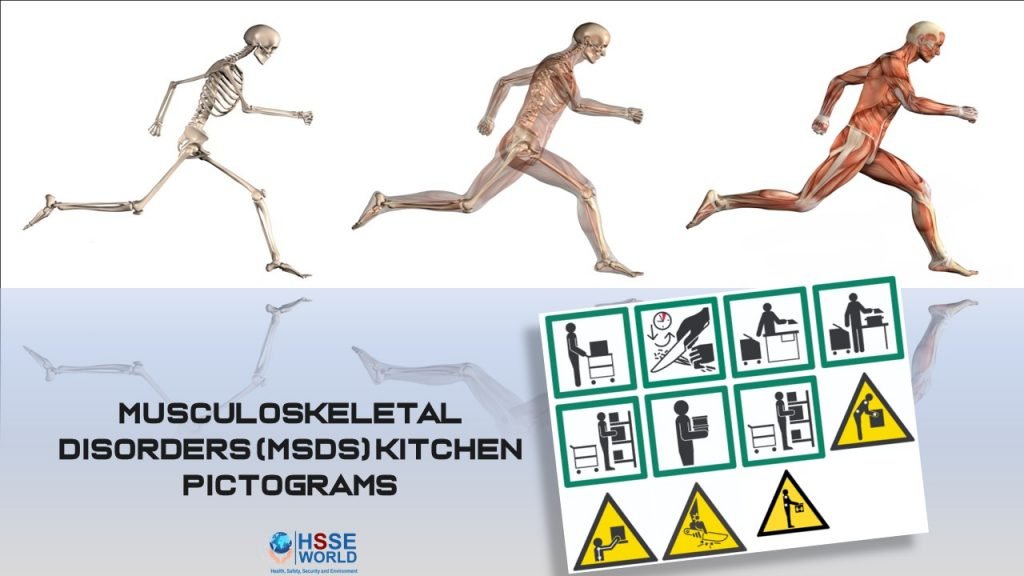
You can hurt yourself when you :
- Lift something too heavy
- Lift something in the wrong way
- Work too long without a break
- Work bent over or twisted

This injury is called a Musculoskeletal Disorder or MSD. Sometimes the pain will go away in a short while. Sometimes the pain will stay for a long time
Examples of MSDs
- Back Pain
- Carpal Tunnel (wrist, hand)
- Tennis or Golfer’s Elbow
- Muscle Strain
- Tendonitis
(learn more: 9-tips-to-prevent-carpal-tunnel-syndrome/)
Workplace Hazards
A workplace hazard is something that can hurt you at work. For example:
- A knife is a workplace hazard because you can cut yourself
- A wet floor is a workplace hazard because you can slip and fall.
MSD Workplace Hazards
There are three MSD workplace hazards:
- Force
- Repetition
- Posture


Force is the power your muscles need to do a task.
As the level of power goes up, the risk of developing an MSD goes up. An MSD can happen when the power needed to do the task is too great for your body. It can also happen if you don’t rest

Repetition is doing the same thing over and over.
This can tire muscles and hurt soft tissues. The soft tissue wears down if there is no rest or change of activity. Repetition can cause pain even if the power being used is low.

Posture is a term for how we hold our bodies.
Posture can refer to the part of your body or your whole body. If you sit, or stand, for a long time that is called a fixed posture. Fixed posture lowers blood flow to your muscles. Lower blood flow can make us tired or uncomfortable. When we are bending and twisting our bodies to do work that is called an awkward posture. Awkward postures increase the amount of force on our soft tissues like tendons or our spine
You are at risk more when:
- The force you use to work is high
- There is repetition in your work
- You are not taking breaks when you should
- You use to fix or awkward posture
- Activity increases in your work
- You are exposed to more than one hazard
Also; each person’s body is different. Things like our size, strength, and flexibility may increase our risk. One task or job may be ok for one person but not another
Hazard and Control Pictograms

Hazard Pictograms:
Hazard pictograms are in yellow triangles. Yellow triangles mean “caution”. When you see a hazard pictogram you should be careful. It tells you that there is a risk.

Control Pictograms:
Control pictograms are in green squares. Green squares mean “personal safety”. When you see a green pictogram it is telling you how to avoid being hurt. It shows you ways to protect yourself.
Chopping
Hazard Pictogram
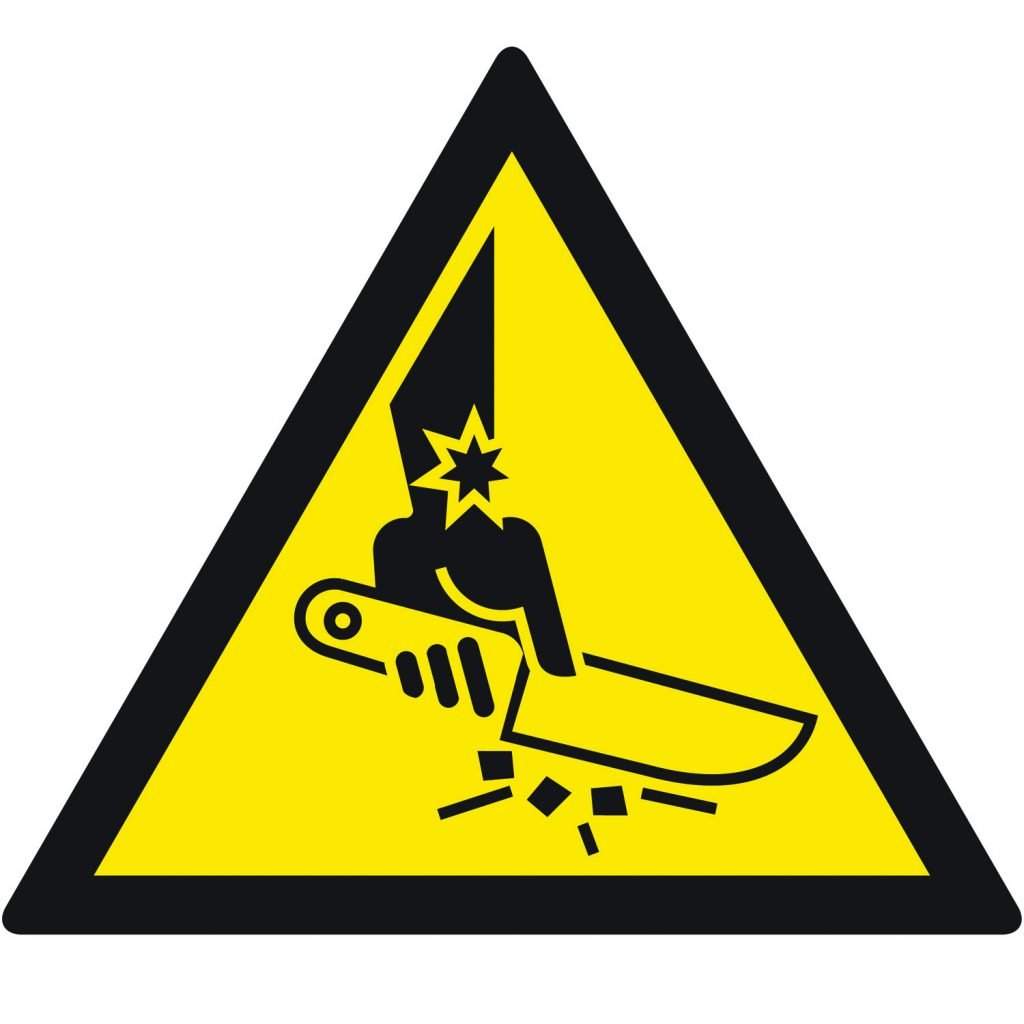
Don’t:
- Use a dull knife
- Work for a long time with no break
- Work at a counter that is too high or too low
Possible Injury:
- Strain from repetitive motion
Control Pictogram

Do:
- Keep your knife sharp
- Use proper techniques
- Talk to your supervisor if you need help
- Work at a counter that is the right size for you
- Take short breaks
Handling Large Boxes and Bags of Produce
Hazard Pictogram

Don’t:
- Carry a lot of bags or boxes
- Lift or carry wrong
- Always reach and bend to get stuff
- Work in awkward postures
- Carry an uneven load
How you could get hurt: Back Strain
- Back Strain
Control Pictogram
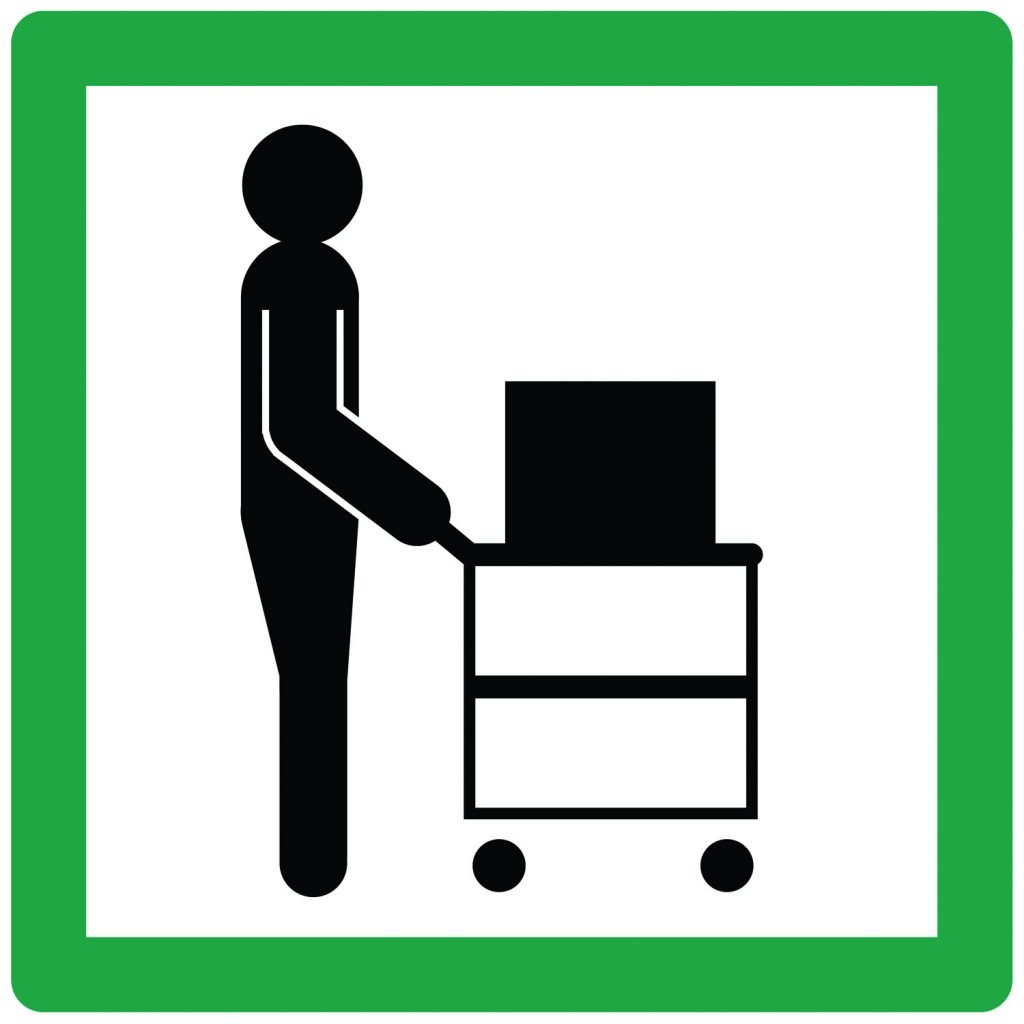
Do:
- Check the weight before you lift
- Ask for help if something is too heavy to lift by yourself
- Use a cart or trolley to move items
- Bring items close to your body before lifting
- Use box or bag handles
Carrying Containers of Prepped Food
Hazard Pictogram

Don’t:
- Store heavy boxes or bags on the top or bottom shelf
- Always reach above your head to get stuff
- Work in awkward postures
- Carry an uneven load
How you could get hurt: Back Strain
- Back Strain
Control Pictogram
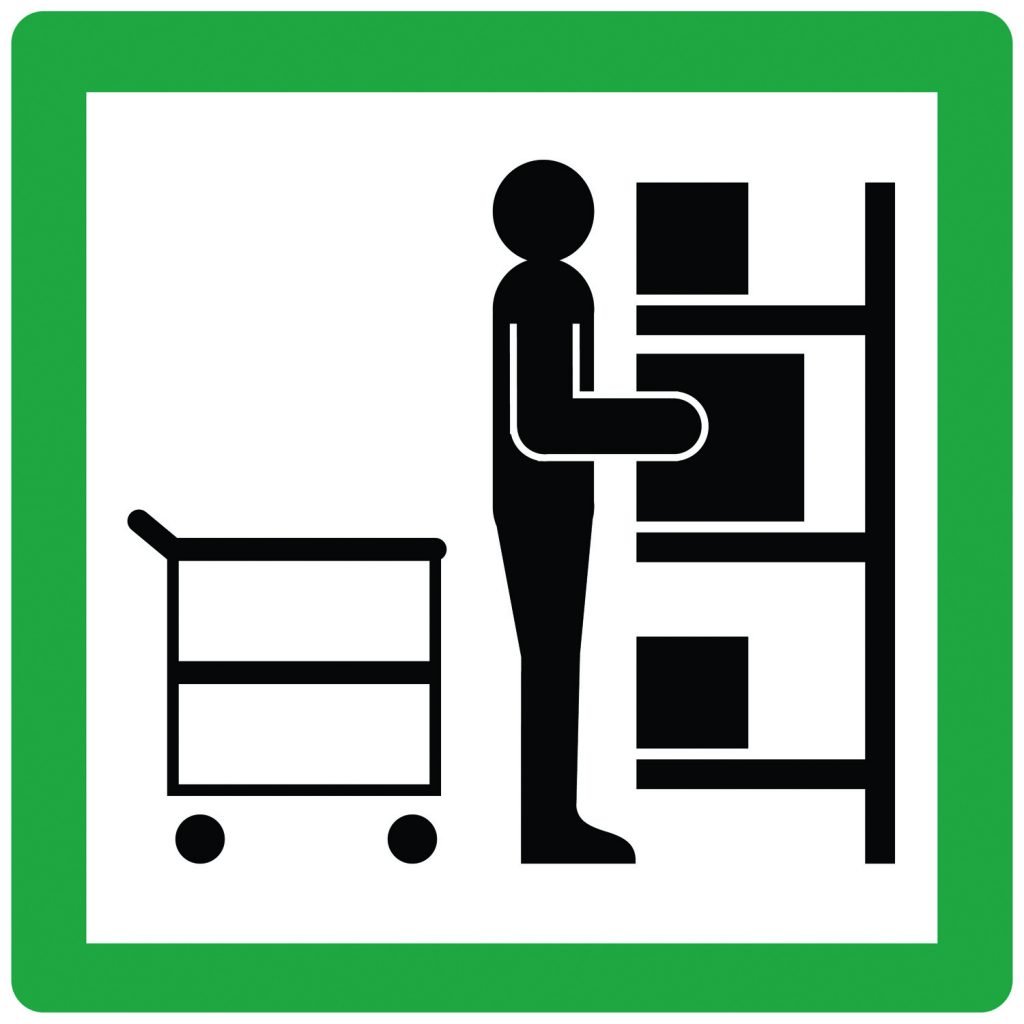
Do:
- Only carry a couple of containers at a time
- Lift only what is good for you
- Use a cart or trolley if you have to move a lot of stuff
- Ask for help when you need it
- Carry containers close to your body
Reaching
Hazard Pictogram

Don’t:
- Carry too many containers
- Lift or carry wrong
- Always reach and bend to get stuff
- Work in awkward postures
- Carry an uneven load
How you could get hurt: Back Strain
- Back Strain
- Shoulder Strain
Control Pictogram
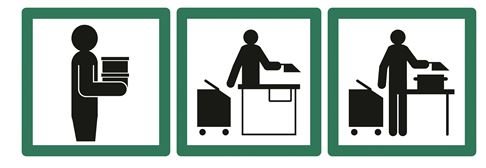
Do:
- Keep the storage area clean
- Store heavy items at waist level
- Use a cart or trolley to move heavy items
- Ask for help to lift items if you need it
If you have back pain you can use Ice back
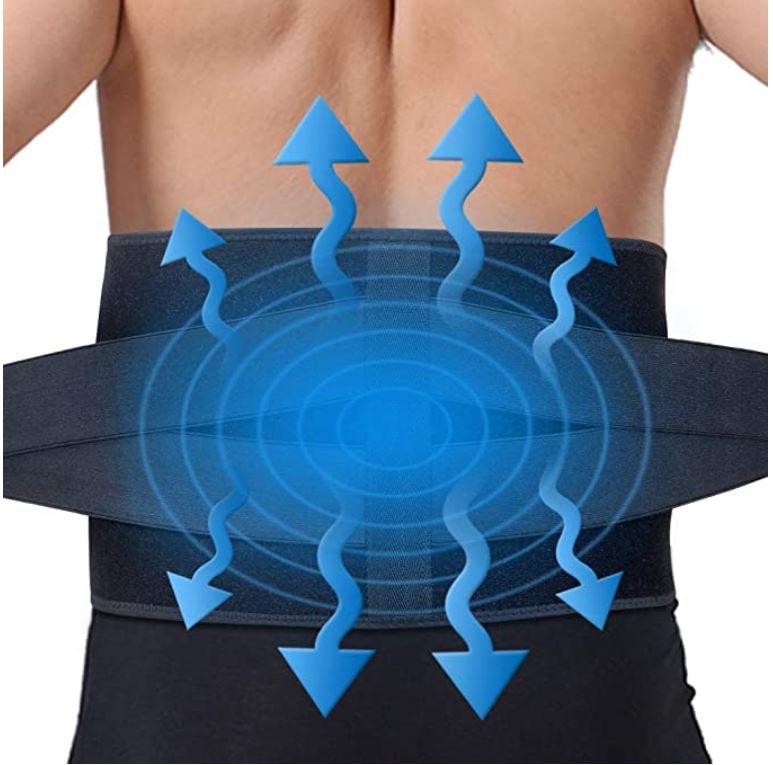
Ice Pack for Lower Back Pain Relief/Back Wrap with Ice Packs for Lower Back Injuries, Sciatica, Coccyx, Scoliosis Herniated Disc – Adjustable Lumbar Support w/Hot Cold Therapy Wrap for Men Women
You can download all Pictograms from here by click on Image and Save Image as Jpg



